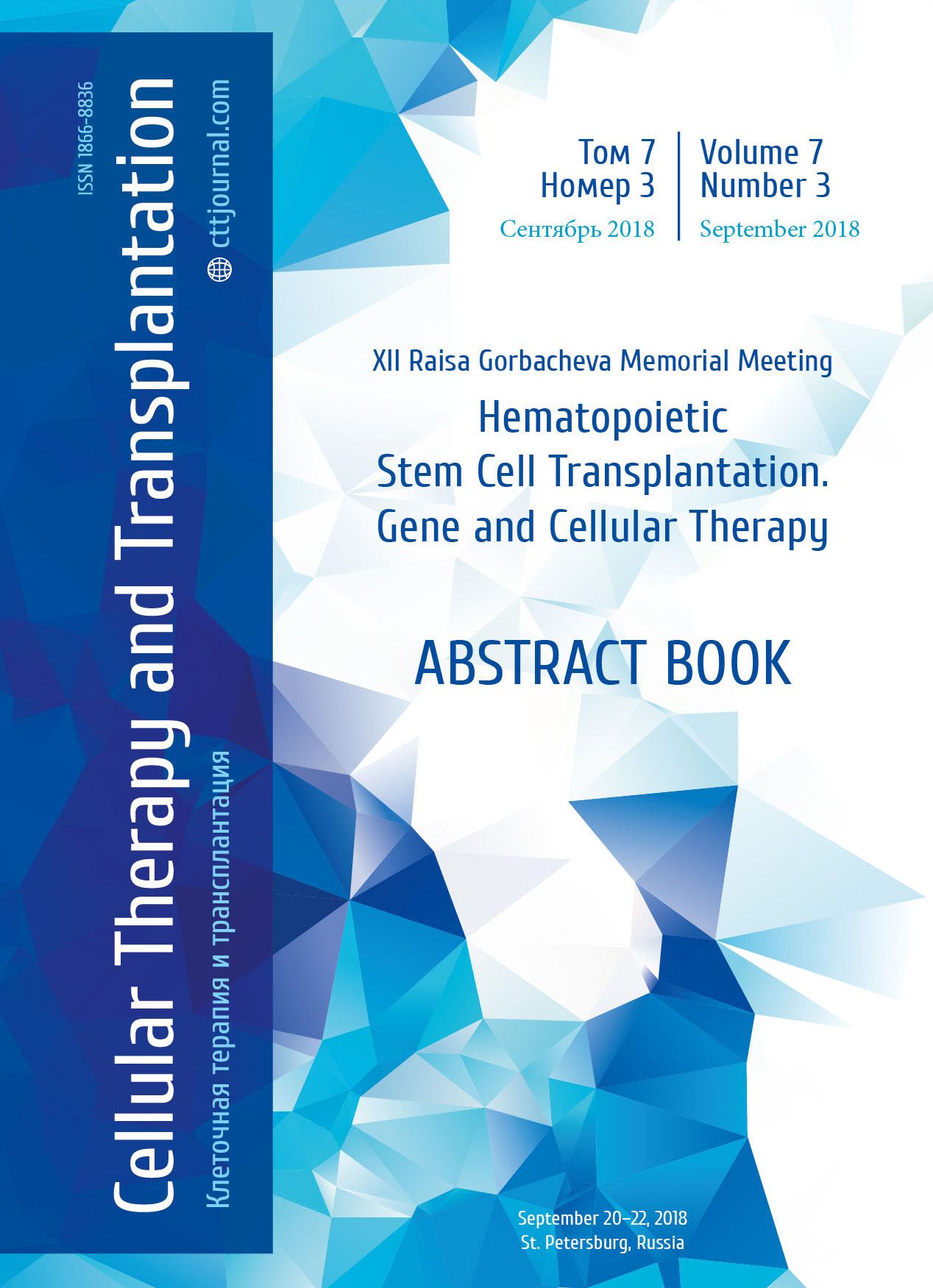A novel method of dimethyl sulfoxide introduction improves preservation of cryopreserved hematopoietic stem cells
Summary
Introduction
Ensuring high and predictable safety of stored hematopoietic stem cells (HSC) after their thawing and performing autologous transplantation is one of the main conditions for the further successful recovery of hemopoiesis after high-dose chemotherapy in patients with hemoblastosis. It is believed that the method of cryopreservation HSC has long been worked out and leads to the expected results, therefore usually used harvested HSC dose only. However, with the use of modern and reliable quality control, universally applied cryopreservation methods of HSC cannot always warrant sufficient integrity of these cells (Table 1). It is well known that the safety of stored HSC is provided by a cryoprotectant, which prevents the cells from osmotic shock when they are frozen and thawed. A cryoprotectant with dimethyl sulfoxide (DMSO) is generally introduced via a syringe into the HSC suspension. At the same time, the final DMSO concentration in 5-10% is reached already in the cryopacket with the graft. However, a cryoprotectant with concentrated DMSO (more than 50%) upon contact with the cell, in view of its physicochemical properties, can lead to its partial destruction before freezing. Thus, increasing safety for HSC can be reduced by destructive effects, which may be due to the initially high concentration of DMSO in the cryoprotectant. To this end, we developed and tested a new method for introducing DMSO into the HSC transplant using a specially designed apparatus, i.e., an automated DMSO introduction system (patent pending). The principle of operation of this system excludes prolonged contact of concentrated DMSO with HSC transplant.
Aim
The aim of our study was to compare the safety of HSCs using an automated and manual method of DMSO introduction.
Materials and methods
Peripheral blood stem cell samples (n=25) were obtained by apheresis from the patients with oncohematological diseases. For the control series (group I), DMSO introduction into a cryopacket with HSC graft was performed manually. In experimental series (group II), DMSO was introduced into the HSC transplant by a new automated method. A standard cryoprotectant (55% DMSO Dex 40) was used, the final DMSO concentration was 7.5%. Freezing (at the same time groups I and II) was performed in a software-assisted freezer with a validated 6-step program. Storage was carried out in liquid nitrogen. The cryopackets were thawed in a water bath at +40 for 1 min. Evaluation of viable HSCs numbers and their total colony-forming activity (CFU) was performed before and after the cryoprotection, as well as after thawing. To get more reliable results, the defrosted samples were taken from the cryopackets. The amounts of HSC was estimated by flow cytometric assay (CD34+/CD45dim/7AAD phenotype), according to the ISHAGE protocol. The colony-forming activity of HSC was evaluated by culturing them for 14 days (Methocult H4435) followed by counting total colonies (CFU).

Results
Similar viability indexes were revealed when testing the samples from the treatment series I and II. This fact may be due to the same incubation effect of DMSO on HSC, related to the duration of the analysis by flow cytometry. Thus, the exposure effect of DMSO on HSC is modelled. Hence, in absence of immediate freezing of HSC after DMSO introduction, the damaging effects are associated with the destructive physico-chemical effects of DMSO to cells, regardless of the manner of DMSO introduction. It is generally accepted to freeze the transplant immediately after DMSO introduction. During this short time interval, only those cell lesions that are manifested immediately after the initial exposure to DMSO are conserved. Therefore, the dependence of the quality control of HSC safety after introducing the cryoprotectant by the method 2 could be more reliably estimated after defrosting.

Figure 1. Recovery of total HSCs, viable cells and colony- forming units in cryopreserved HSCs treated with DMSO at different regimens
According to the results shown in the figure 1, the safety of HSC after defrosting is significantly higher by 14% (p≤0.05) when using the automated system in comparison with manual mode. Given all other equal conditions, the total losses of HSC after defrosting with the manual method averaged 20%, with an automated technique, 6%. At the same time, 6% include both HSC losses when DMSO is introduced, and HSC losses during the freezing procedure. Therefore, the losses caused by freezing can be assumed to be the same when using different methods of introducing DMSO. Therefore, in the manual process, the losses are associated with the step of DMSO introduction. We are thinking that the average preservation rate of 94% is due to the method of introducing DMSO using an automated system. The principle of operation of the automated system allows one to reduce the momentary damaging effect of the initial concentrated DMSO solution on HSC and to ensure its smoother dilution to the required final DMSO concentration of 7.5%. The results presented in the table and in the figure also show that DMSO at the stage of introduction at exposure may have a greater negative impact on HSC than the procedure for freezing the graft.
Conclusion
The safety of HSC when using an automated system is significantly higher by 14% compared to manual mode.
Keywords
Hematopoietic stem cells, cryopreservation, dimethyl sulfoxide, autologous transplantation.


